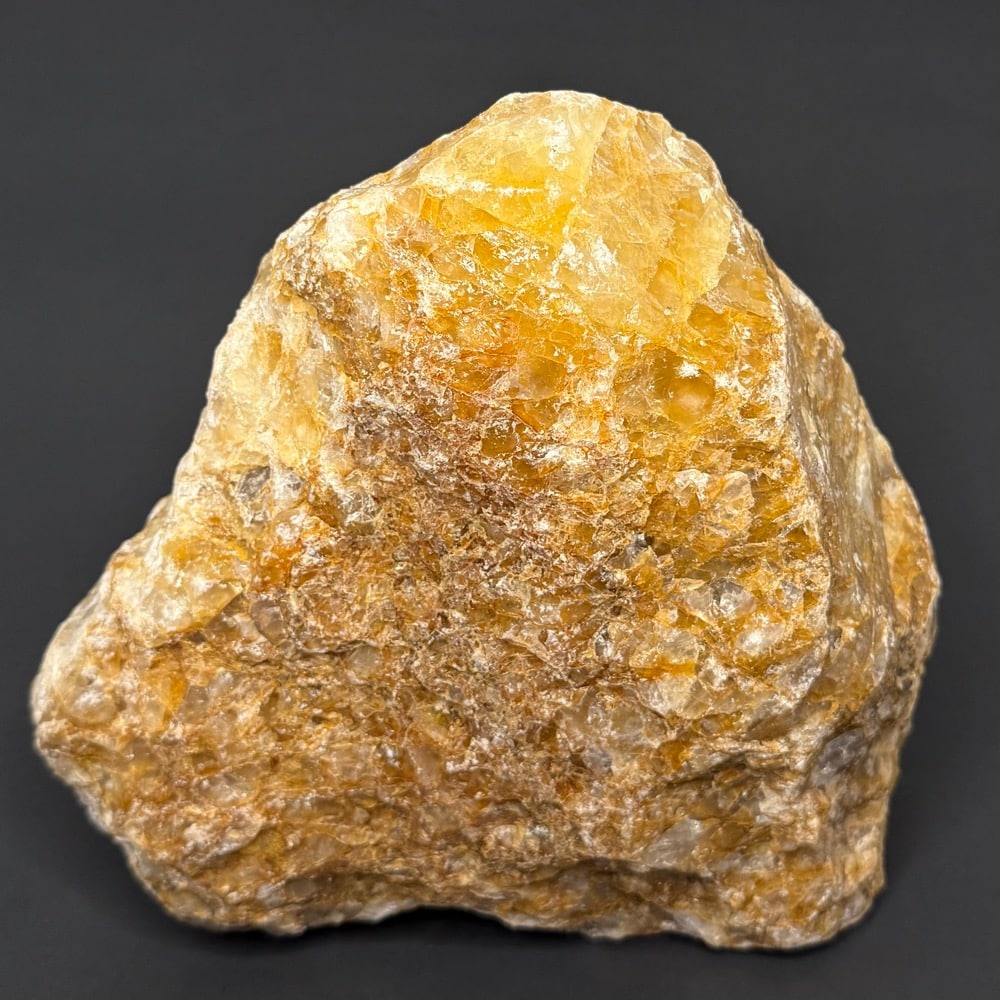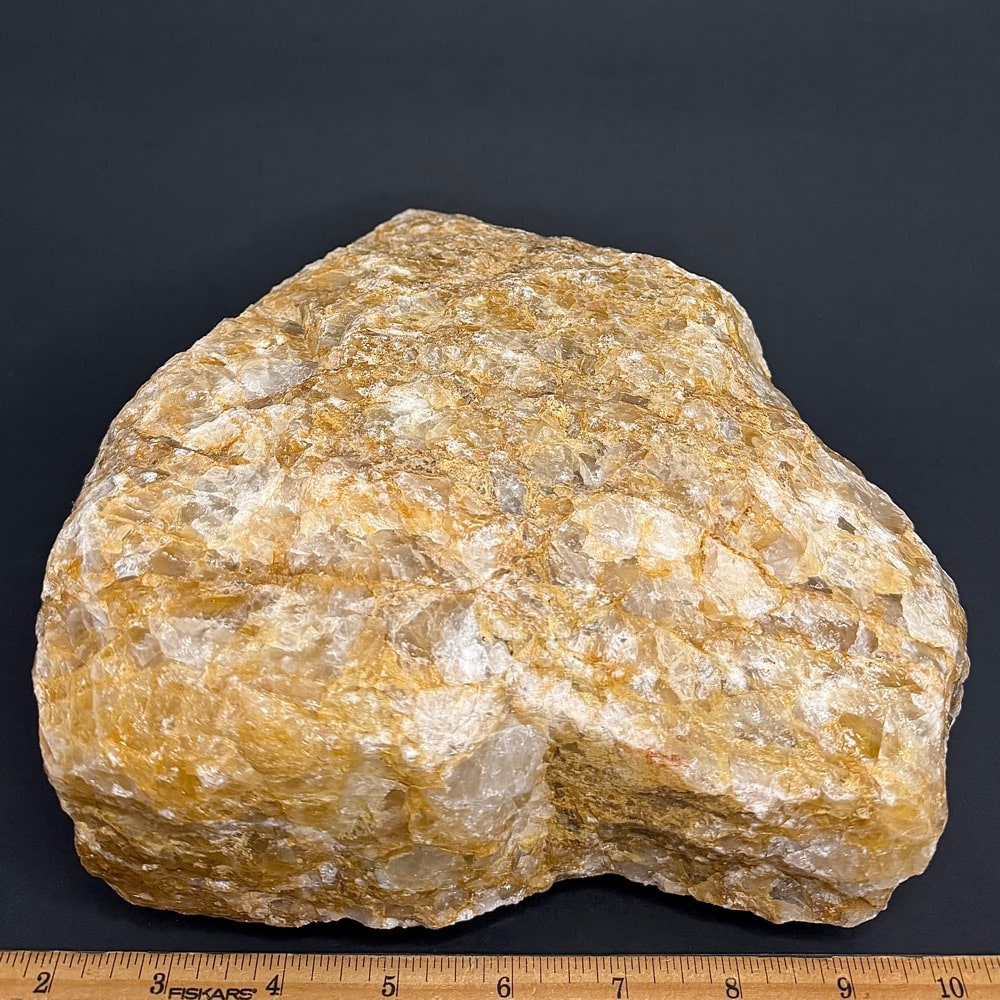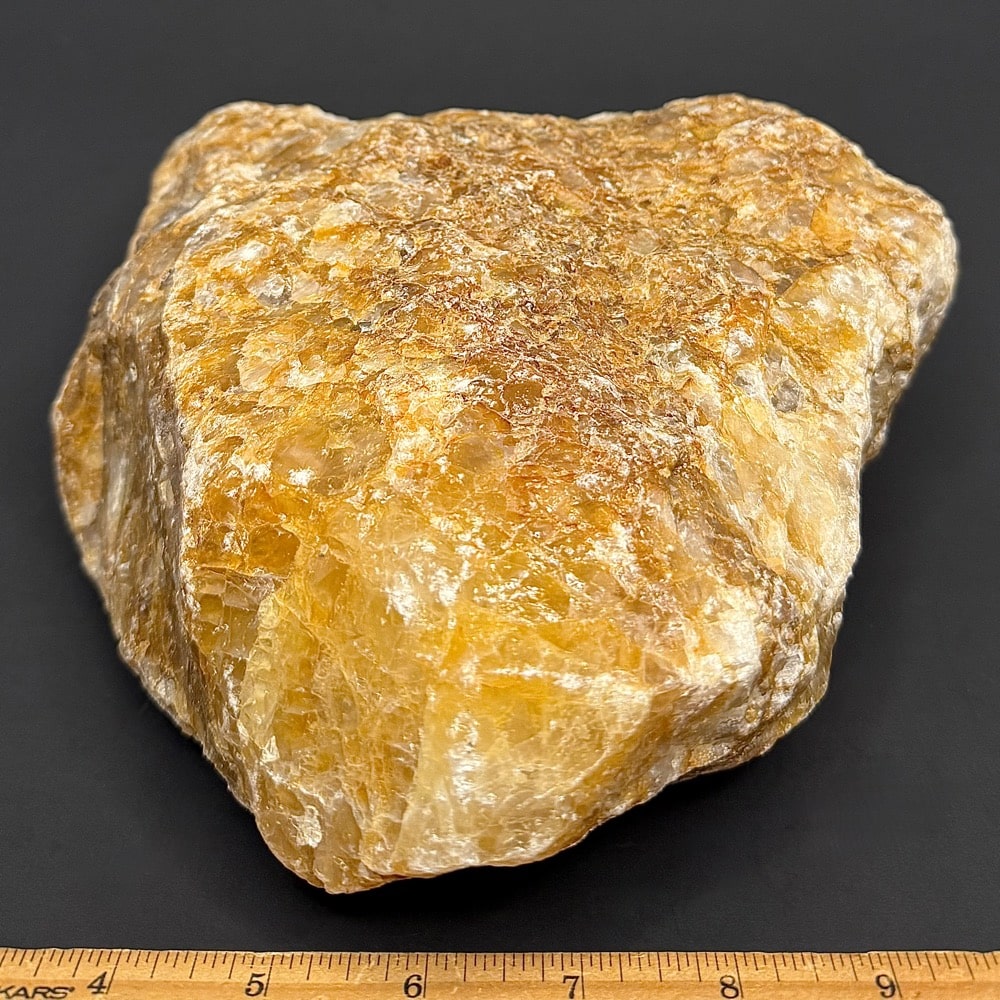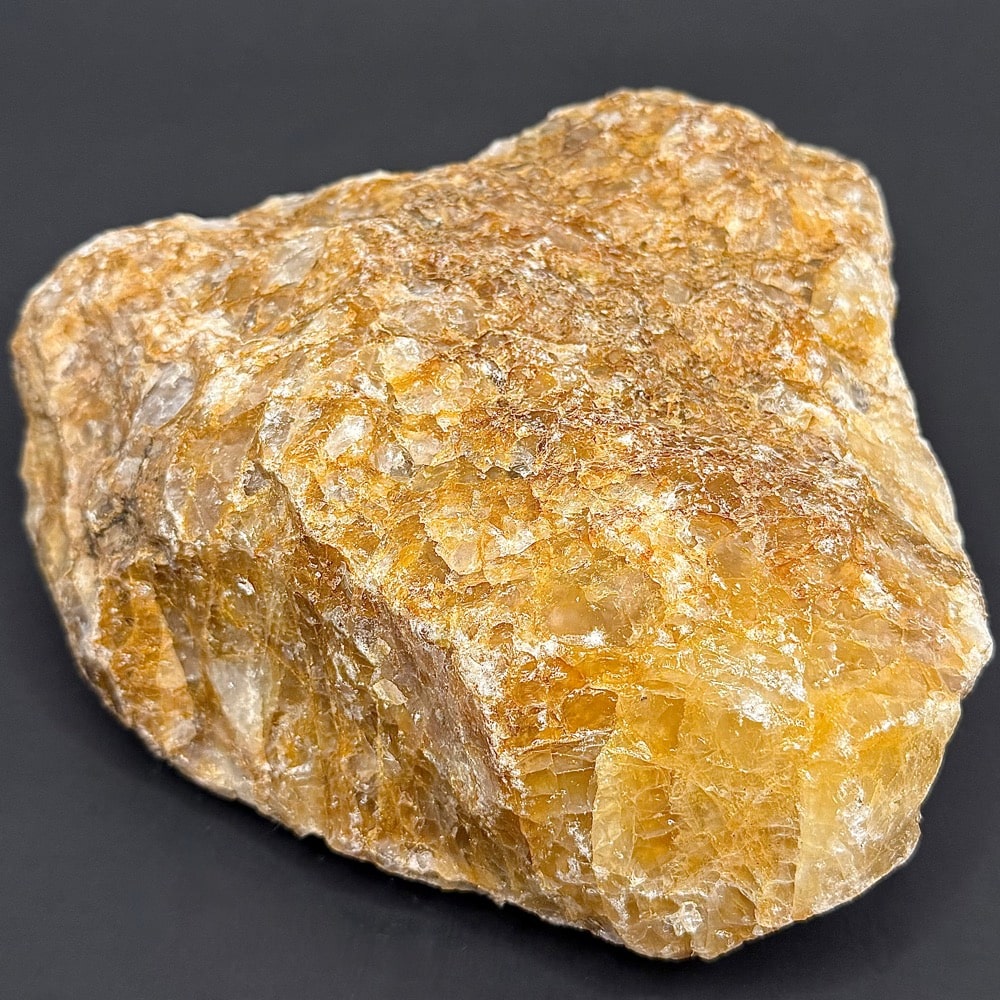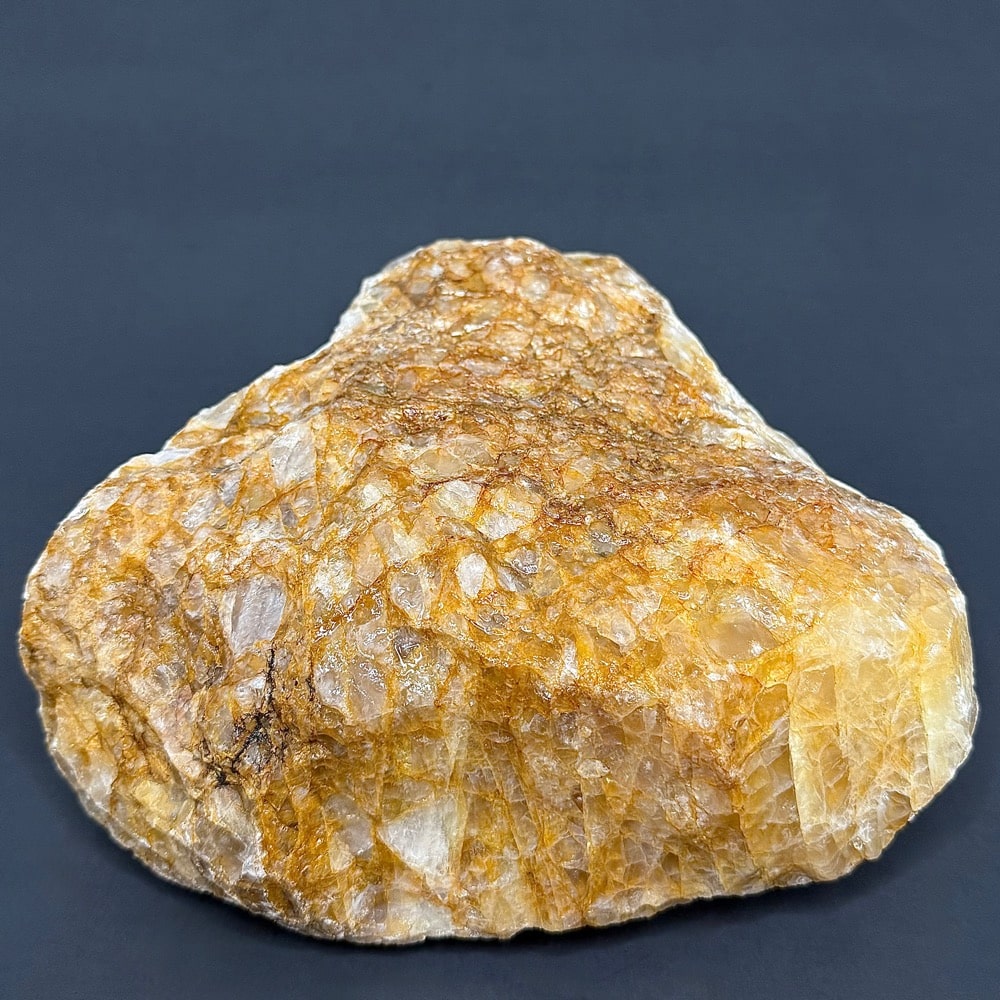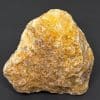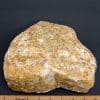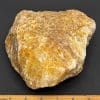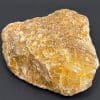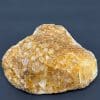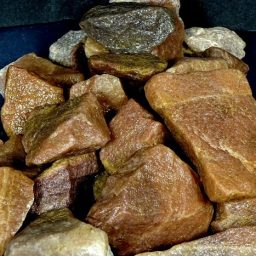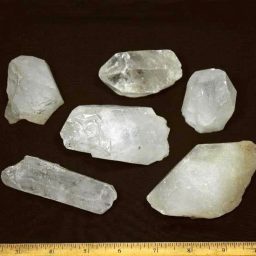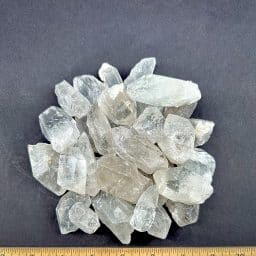Description
Iron Quartz is an iron included variation of the hard, crystalline mineral composed of silica (silicon dioxide), that comprises Quartz. The atoms are linked in a continuous framework of SiO4 silicon–oxygen tetrahedra, with each oxygen being shared between two tetrahedra, giving an overall chemical formula of SiO2. Quartz is, therefore, classified structurally as a framework silicate mineral and compositionally as an oxide mineral. Quartz is the second most abundant mineral in Earth’s continental crust, behind feldspar.
There are many different varieties of quartz, several of which are classified as gemstones. Since antiquity, varieties of quartz have been the most commonly used minerals in the making of jewelry and hardstone carvings, especially in Europe and Asia.
Quartz is the mineral defining the value of 7 on the Mohs scale of hardness, a qualitative scratch method for determining the hardness of a material to abrasion.
Etymology
The word “quartz” is derived from the German word Quarz, which had the same form in the first half of the 14th century in Middle High German and in East Central German and which came from the Polish dialect term kwardy, which corresponds to the Czech term tvrdý (“hard”). Some sources, however, attribute the word’s origin to the Saxon word Querkluftertz, meaning cross-vein ore.
The Ancient Greeks referred to quartz as κρύσταλλος (krustallos) derived from the Ancient Greek κρύος (kruos) meaning “icy cold”, because some philosophers (including Theophrastus) understood the mineral to be a form of supercooled ice. Today, the term rock crystal is sometimes used as an alternative name for transparent coarsely crystalline quartz.
Early studies
Roman naturalist Pliny the Elder believed quartz to be water ice, permanently frozen after great lengths of time. He supported this idea by saying that quartz is found near glaciers in the Alps, but not on volcanic mountains, and that large quartz crystals were fashioned into spheres to cool the hands. This idea persisted until at least the 17th century. He also knew of the ability of quartz to split light into a spectrum.
In the 17th century, Nicolas Steno’s study of quartz paved the way for modern crystallography. He discovered that regardless of a quartz crystal’s size or shape, its long prism faces always joined at a perfect 60° angle.
Quartz exists in two forms, the normal α-quartz and the high-temperature β-quartz, both of which are chiral. The transformation from α-quartz to β-quartz takes place abruptly at 573 °C (846 K; 1,063 °F). Since the transformation is accompanied by a significant change in volume, it can easily induce micro fracturing of ceramics or rocks passing through this temperature threshold.
Quartz belongs to the trigonal crystal system at room temperature, and to the hexagonal crystal system above 573 °C (846 K; 1,063 °F). The ideal crystal shape is a six-sided prism terminating with six-sided pyramid-like rhombohedrons at each end. In nature, quartz crystals are often twinned (with twin right-handed and left-handed quartz crystals), distorted, or so intergrown with adjacent crystals of quartz or other minerals as to only show part of this shape, or to lack obvious crystal faces altogether and appear massive.
Well-formed crystals typically form as a druse (a layer of crystals lining a void), of which quartz geodes are particularly fine examples. The crystals are attached at one end to the enclosing rock, and only one termination pyramid is present. However, doubly terminated crystals do occur where they develop freely without attachment, for instance, within gypsum.
These space groups are truly chiral (they each belong to the enantiomorph pairs). Both α-quartz and β-quartz are examples of chiral crystal structures composed of achiral building blocks (SiO4 tetrahedra in the present case). The transformation between α- and β-quartz only involves a comparatively minor rotation of the tetrahedra with respect to one another, without a change in the way they are linked. However, there is a significant change in volume during this transition, [clarification needed] and this can result in significant micro fracturing in ceramics and in rocks of the Earth’s crust.
Varieties (according to microstructure)
Although many of the varietal names historically arose from the color of the mineral, current scientific naming schemes refer primarily to the microstructure of the mineral. Color is a secondary identifier for the cryptocrystalline minerals, although it is a primary identifier for the macrocrystalline varieties.
Major varieties of quartz:
Rock crystal. Colorless. Transparent.
Amethyst. Purple to violet. Transparent.
Citrine.Yellow, ranging to reddish-orange or brown (Madera quartz), and occasionally greenish yellow. Transparent.
Ametrine. A mix of amethyst and citrine. Hues of purple/violet and orange/brown. Transparent.
Rose quartz. Pink: may display diasterism. Transparent.
Chalcedony. Fibrous, cryptocrystalline occurring in many varieties. Varying translucence. The term is often used for white, cloudy, or lightly colored material intergrown with moganite (otherwise more specific names are used).
Carnelian. Reddish orange chalcedony. Translucent.
Aventurine. Tiny, aligned inclusions (usually mica) that shimmer with ‘aventurescence’. Multi-colored.Translucent to opaque.
Agate. Multi-colored, curved or concentric banded chalcedony (cf. Onyx). Semi-translucent to translucent.
Onyx. Multi-colored, straight banded chalcedony or chert (cf. Agate). Semi-translucent to opaque. Jasper. Cryptocrystalline quartz. Typically, red to brown but often used for other colors. Opaque.
Milky Quartz. White, may display diasterism. Translucent to opaque.
Smoky Quartz. Light to dark gray, sometimes with a brownish hue. Translucent to opaque.
Tiger’s Eye. Fibrous. Gold, red-brown or bluish colored chalcedony, exhibiting chatoyancy.
Prasiolite. Green. Transparent.
Rutilated Quartz. Contains acicular (needle-like) inclusions of rutile.
Dumortierite Quartz. Contains large amounts of blue dumortierite crystals. Translucent.
Prase. Green. Translucent.
